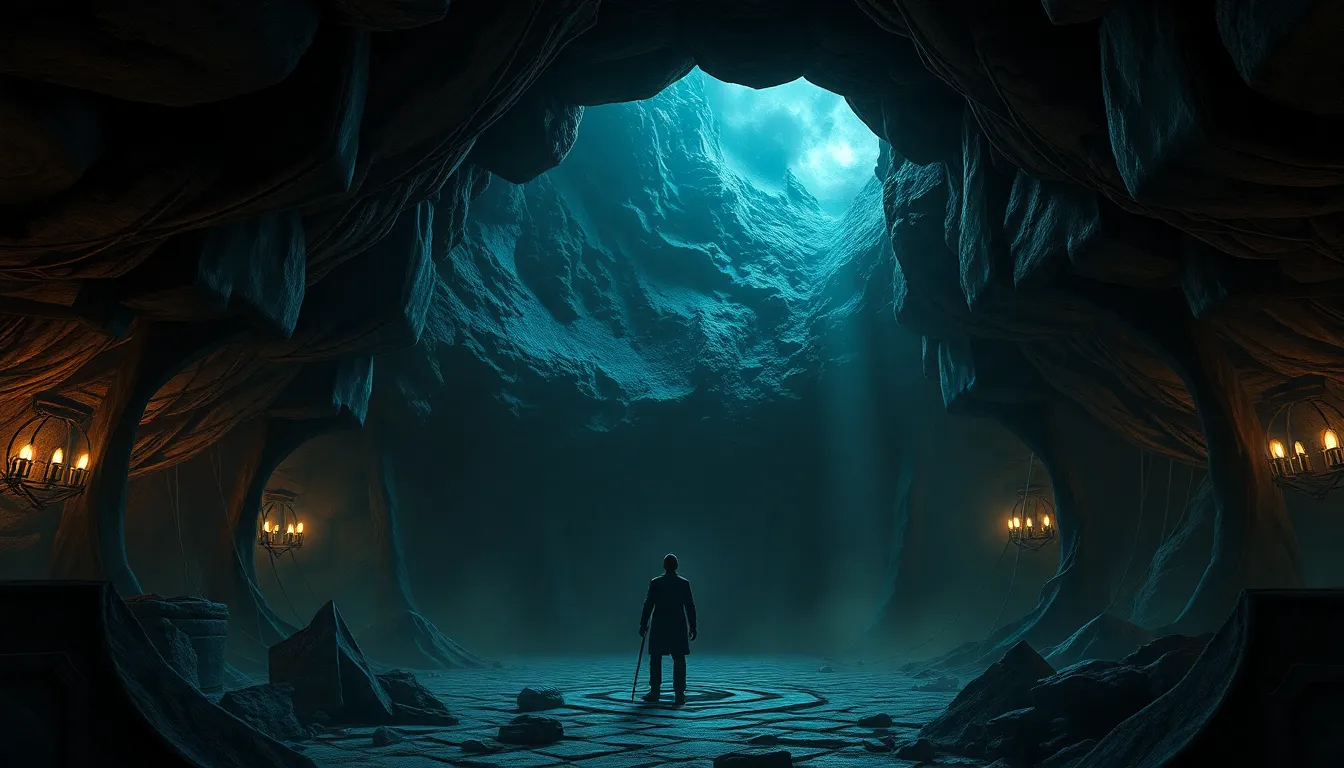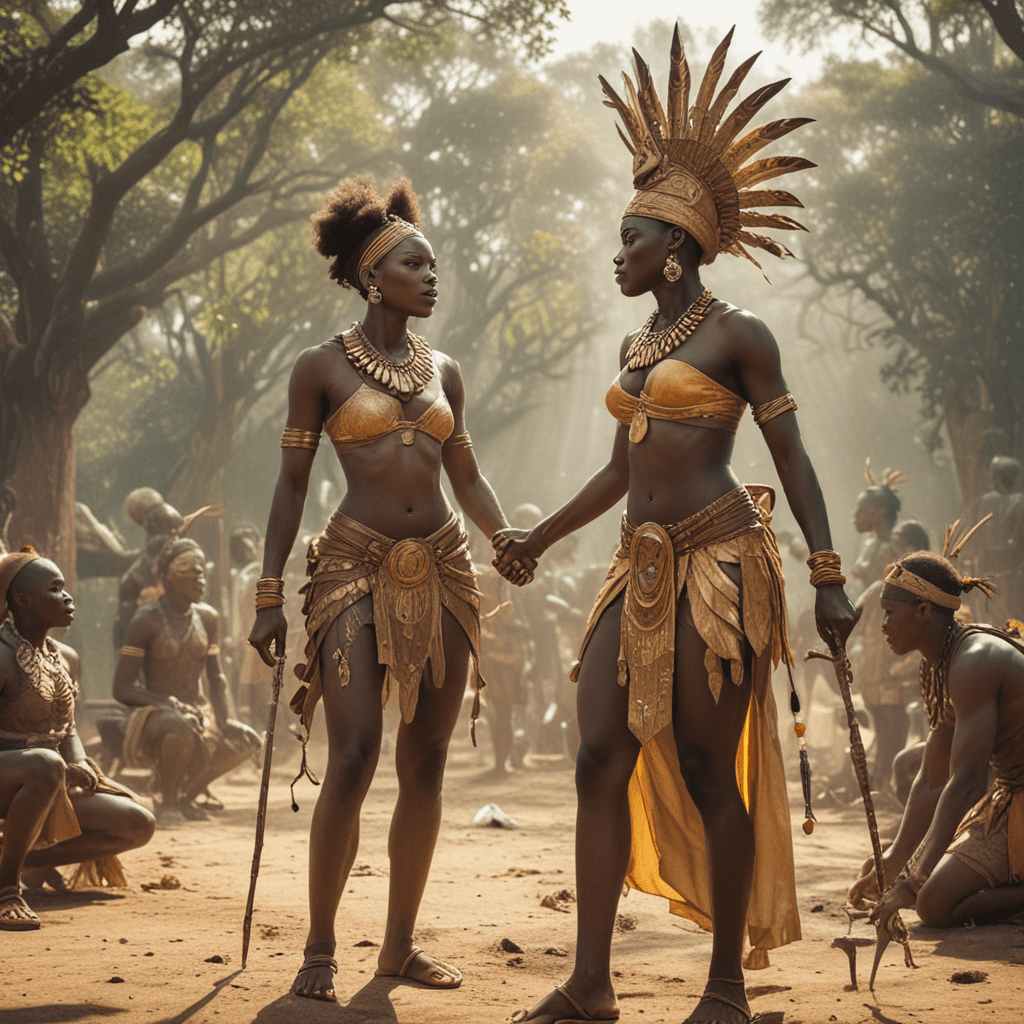The Underworld: A Mythical Realm of Shadows and Secrets
I. Introduction
The concept of the Underworld has intrigued humanity for centuries, serving as a powerful symbol in various mythologies across the globe. Defined as a realm where the dead reside, the Underworld varies significantly in its description and significance among different cultures. It often represents not only a destination for souls after death but also a reflection of a civilization’s values, fears, and beliefs about life and the afterlife.
This article aims to explore the Underworld from multiple mythological perspectives, highlighting its historical context, key figures, and cultural significance. Through examining the Underworld in Greek, Roman, Norse, Eastern, Indigenous, and modern contexts, we can better understand the enduring fascination with this mythical realm.
II. Historical Context of the Underworld
The concept of the Underworld emerged in ancient civilizations as societies grappled with questions of mortality and the afterlife. Archaeological findings, such as burial sites and artifacts, reveal how different cultures envisioned the fate of the dead. For example:
- In ancient Egypt, the Afterlife was depicted as a continuation of life on Earth, with the deceased judged by Osiris.
- In Mesopotamia, the Underworld was a grim place ruled by the goddess Ereshkigal, reflecting a view of death as a descent into darkness.
Comparing the Underworld across cultures reveals both unique interpretations and common themes, such as the presence of judges, rivers, and guardians that souls encounter on their journey.
III. The Greek Underworld: Hades and Its Denizens
In Greek mythology, the Underworld is known as Hades, named after its ruler. This realm is often depicted as a complex structure divided into various regions, including Elysium, Tartarus, and the Asphodel Meadows. Key figures in this realm include:
- Hades: The god of the Underworld, who oversees the souls of the deceased.
- Persephone: The queen of the Underworld, who spends half the year above ground with Demeter.
- Charon: The ferryman who transports souls across the River Styx.
- The Furies: Female deities of vengeance who punish wrongdoers.
The River Styx, a significant location in Hades, serves as a barrier between the living and the dead, where souls must pay Charon for passage. Other notable places include the Fields of Elysium, a paradise for the virtuous, and Tartarus, a pit of torment for the wicked.
IV. The Roman Underworld: Dis and Its Influence
The Roman interpretation of the Underworld is encapsulated in the figure of Dis Pater, who presides over the realm of the dead. While similar to the Greek Hades, the Roman Underworld reflects distinct cultural values:
- Dis Pater: Represents wealth and the earth, emphasizing the connection between death and the land.
- Proserpina: The Roman equivalent of Persephone, who also spends part of the year with her mother, Ceres.
Roman beliefs about the afterlife were influenced by Greek mythology but included unique practices such as the veneration of ancestors and rituals to ensure a peaceful existence in the Underworld. The Roman view emphasized the importance of memory and legacy, as the dead were honored through rituals and commemorations.
V. The Underworld in Norse Mythology
Norse mythology presents the Underworld as a realm known as Hel, ruled by the goddess Hel. This domain is distinct from Valhalla, which is reserved for fallen warriors who die in battle. Key aspects of the Norse Underworld include:
- Hel: A cold, dark realm where most souls go after death.
- Valhalla: A glorious hall for warriors selected by Odin, who prepare for Ragnarok.
The journey of souls in Norse cosmology is fraught with challenges, as they must navigate various realms and face different fates based on their actions in life. The contrast between Hel and Valhalla highlights the Norse emphasis on honor and valor in life.
VI. The Underworld in Eastern Mythologies
In Eastern mythologies, the Underworld is represented through various deities and concepts:
- Hinduism: Yama is the god of death, overseeing Naraka, where souls are judged and sent to appropriate realms based on their karma.
- Buddhism: The concept of Naraka serves as a place of suffering for those who have committed negative actions, while Pure Lands offer a path to enlightenment.
- Chinese Mythology: Ancestors play a vital role in the afterlife, with beliefs about spirits and the importance of honoring them through rituals.
These diverse beliefs highlight the rich tapestry of Eastern views on death and the afterlife, often emphasizing moral conduct and ancestral reverence.
VII. The Underworld in Indigenous Cultures
Indigenous cultures around the world possess unique interpretations of the Underworld, often intertwined with nature and spirituality:
- Native American Traditions: Many tribes have their own Underworld myths, often involving journeys through dark realms to reach the spirit world.
- Australian Aboriginal Beliefs: The Dreamtime encompasses beliefs about creation and the afterlife, where spirits of ancestors influence the living.
- African Mythologies: Various cultures view the Underworld as a place where ancestors reside, providing guidance and protection to the living.
These traditions emphasize the connection between the living and the dead, portraying the Underworld as a place of continuity and spiritual presence.
VIII. Symbolism and Themes Associated with the Underworld
The Underworld is rich in symbolism, often representing themes of death, rebirth, and transformation:
- Death and Rebirth: Many cultures view the Underworld as a necessary step for the soul’s journey, symbolizing the cycle of life.
- Judgment and Redemption: The Underworld serves as a place of reckoning, where souls face the consequences of their actions.
- Art and Literature: Throughout history, the Underworld has inspired countless works in literature and art, serving as a backdrop for exploring human experiences and existential questions.
These themes resonate across cultures, reflecting humanity’s enduring fascination with life, death, and what lies beyond.
IX. Modern Interpretations and Adaptations of the Underworld
In contemporary literature and film, the Underworld continues to captivate audiences, often adapted from ancient myths:
- Works like Dante’s “Inferno” and Neil Gaiman’s “American Gods” draw heavily on mythological themes.
- Modern films, such as “The Matrix” and “Coco,” explore the concepts of the Underworld through innovative narratives.
The influence of mythology is evident in modern pop culture, where the Underworld serves as a metaphor for personal struggles and the quest for meaning. As society evolves, the relevance of the Underworld remains, reflecting our ongoing quest to understand life and death in a changing world.
X. Conclusion
In summary, the Underworld is a complex and multifaceted concept that transcends cultural boundaries. From the structured realms of Hades and Dis to the spiritual journeys in Indigenous traditions, the Underworld serves as a profound symbol of humanity’s relationship with death and the afterlife. Through exploring its various interpretations and significance, we gain insight into the values and beliefs that shape our understanding of existence. The Underworld, with its shadows and secrets, continues to resonate with us, inviting reflection on our own lives and the legacies we leave behind.


